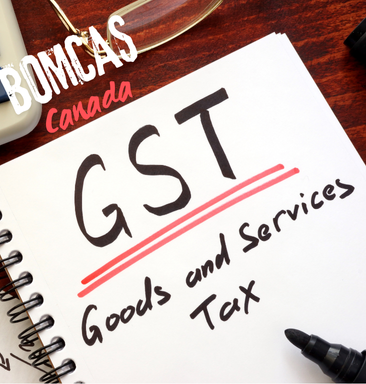Most Canadian taxpayers remain unaware of a crucial detail – financial institutions need not issue T5 Statements for investment income below $50. Yet this tax document becomes essential once earnings cross this threshold.

Canadian tax law mandates financial institutions to distribute T5 slips annually before February ends. These slips capture the full spectrum of investment earnings – from basic savings account interest to complex corporate dividends and capital gains. Each category carries distinct tax implications under current regulations.
Tax season brings unique challenges for investment income reporting. The process demands careful attention to specific details, from recording non-eligible dividends in Box 10 to properly declaring Canadian interest income in Box 13. This guide offers clear, actionable insights for accurate T5 form completion.
Our expert analysis breaks down each component, ensuring your readiness for successful tax filing this season.
What is a T5 Statement of Investment Income
T5 Statement of Investment Income stands as the cornerstone document for reporting non-registered investment earnings to Canadian tax authorities. This official record serves a vital role in maintaining transparency between investors and the Canada Revenue Agency (CRA).
Purpose of the T5 form
T5 documentation encompasses multiple investment income streams:
- Interest from savings accounts and bank deposits
- Term deposits and guaranteed investment certificates (GICs)
- Dividends from Canadian corporations
- Capital gains dividends
- Annuity payments
- Earnings from life insurance policies
T5 forms establish precise investment income tracking mechanisms. Joint account scenarios demand particular attention, with income allocation reflecting each holder’s contribution percentage.
Who needs to file a T5
T5 filing obligations activate when investment income surpasses CAD 69.67 within a tax year. Corporate entities distributing shareholder dividends must fulfill their T5 reporting duties.
T5 reporting requirements extend to:
- Financial institutions paying interest on deposits or investments
- Corporations distributing dividends to shareholders
- Organizations paying certain types of royalties
- Insurance companies reporting policy earnings
Joint investment scenarios trigger T5 issuance for all account holders. Equal contributions mandate 50-50 income splitting, while varying contribution levels determine proportional income attribution.
BOMCAS Canada’s tax expertise recognizes specific exemptions from T5 requirements. Private mortgage interest payments between individuals and capital dividends fall outside T5 reporting scope. Tax-sheltered vehicles like RRSPs and TFSAs generate interest exempt from T5 reporting obligations.
Financial institutions face a strict February-end deadline for T5 distribution. While the CAD 69.67 threshold determines slip issuance requirements, taxpayers bear responsibility for declaring all investment income, regardless of amount.
Getting Ready for T5 Filing
T5 filing success demands meticulous attention to deadlines and documentation standards. BOMCAS Canada’s expertise guides clients through essential preparation steps, ensuring timely and accurate submissions.
When to expect your T5
T5 slip distribution follows strict calendar requirements. Financial institutions must complete distribution by February’s final day following the investment income year. Business day rules apply when deadlines coincide with weekends or holidays.
T5 slip issuance rules exempt investment income below CAD 69.67. Tax obligations persist regardless – every dollar of investment income demands reporting on your tax return.
March 15th marks a critical checkpoint. Missing T5s after this date warrant immediate contact with your financial institution. Common delay factors include:
- Mail system issues
- Sub-threshold income amounts
- Administrative processing time
Gathering necessary documents
Successful T5 filing demands these key records:
- Financial statements detailing investment income
- Dividend payment documentation
- Interest income records
- Foreign investment papers
- Previous tax return files
Modern banking platforms offer electronic T5 access. CRA My Account users benefit from digital slip availability. Written authorization unlocks electronic delivery preferences with financial institutions.
Missed deadlines trigger substantial consequences. Unreported income faces 10% penalties, potentially reaching 50% of additional tax obligations. Base penalties start at CAD 139.34, escalating with slip volume.
Joint investment scenarios demand precise documentation of contribution ratios. Primary account holder details appear prominently, accompanied by box 23’s special code 2 designation for joint holdings.
Calendar year parameters govern T5 reporting cycles, superseding corporate fiscal periods. This standardization establishes clear reporting frameworks across investment categories.
Understanding Your Investment Income Types
T5 Statement reporting demands mastery of three distinct investment income categories. BOMCAS Canada’s expertise illuminates these critical tax distinctions, ensuring precision in your financial reporting.
Dividend income explained
Canadian corporate dividends present two distinct classifications: eligible and non-eligible distributions. Eligible dividends command superior tax advantages through federal dividend credits. Box 24 displays actual dividend figures, while Box 25 reveals taxable amounts.
Non-eligible dividend calculations follow alternate protocols. Box 11 presents taxable values, incorporating dividend amounts plus prescribed gross-up percentages. Tax calculations utilize a 9/13 ratio of taxable gross-up amounts for dividend credit determination.
Interest income basics
Interest revenue sources encompass:
- Savings accounts and bank deposits
- Term deposits and GICs
- Fully registered bonds or debentures
- Insurance policies and annuity contracts
- Investment dealer accounts
Box 13 consolidates Canadian-source interest earnings. Time-sensitive interest accumulation often spans multiple tax years. Post-1990 investments mandate annual interest reporting, superseding maturity-based declarations.
Foreign investment income
Foreign earnings demand heightened scrutiny on T5 forms. Box 15 captures gross foreign income, while Box 16 documents foreign tax payments. Canadian dollar conversion requirements apply to all foreign interest and dividend receipts.
Bank of Canada exchange rates at payment date determine conversion values. Federal and provincial tax calculations may benefit from foreign tax credit provisions. Foreign dividend payments stand distinct from Canadian corporate dividends, excluding dividend tax credit eligibility.
Joint account scenarios dictate contribution-based interest attribution. This methodology ensures equitable tax burden distribution among account participants.
Breaking Down T5 Box Numbers
T5 slip accuracy hinges on proper interpretation of box numbers. BOMCAS Canada’s expertise decodes these critical elements, ensuring precise tax calculations.
Dividend boxes (10-12)
T5 dividend reporting centers on three essential boxes, each serving distinct tax calculation purposes:
| Box Number | Purpose | Details |
|---|---|---|
| Box 10 | Actual dividend amount | Shows non-eligible dividends received |
| Box 11 | Taxable amount | Includes dividend plus 15% gross-up |
| Box 12 | Dividend tax credit | Equals 9.0301% of Box 11 amount |
Box 10 records actual non-eligible dividend payments from Canadian corporations. Box 11 calculations incorporate Box 10 values plus mandated 15% gross-up for post-2019 dividends. Box 12 reflects dividend tax credits, determined through 9/13 ratio application to taxable gross-up amounts.
Interest income boxes (13-14)
Box 13 spans multiple Canadian interest categories:
- Interest from registered bonds and debentures
- Earnings from deposits with financial institutions
- Interest from investment dealer accounts
- Insurance policy and annuity contract payments
Box 14 functions as the designated space for additional Canadian income:
- Taxable dividends from non-taxable Canadian corporations
- Life insurance policy earnings reported under paragraph 56(1)(j)
- Distributions from eligible funeral arrangements
Joint account structures necessitate separate T5 slips per holder. Financial institutions report interest exceeding $50, yet taxpayers bear responsibility for declaring all investment earnings.
Specific interest categories fall outside Box 13 reporting requirements:
- Interest from sources outside Canada
- Interest payments between individuals
- Private mortgage interest
- Interest earned in registered accounts like RRSPs or TFSAs
How to Report Foreign Income
Foreign income reporting demands meticulous attention to currency conversion protocols and tax credit computations. BOMCAS Canada’s expertise ensures precise documentation of your international investment portfolio.
Converting foreign currency
Box 15 captures foreign income values, requiring mandatory Canadian dollar conversion. Bank of Canada exchange rates establish conversion standards through two methodologies:
- Daily Rate: Transaction-specific exchange rate application
- Annual Average: Consolidated rate for multiple payment cycles
Dividend payment conversions permit flexibility between transaction-date rates and annual averages. Methodological consistency remains paramount across reporting periods.
Authorized exchange rate providers include:
| Source | Requirements |
|---|---|
| Bank of Canada | Official daily and annual rates |
| Bloomberg L.P. | Must be widely available and verifiable |
| Thomson Reuters | Published by independent provider |
| OANDA Corporation | Recognized by market standards |
Claiming foreign tax credits
Box 16 documents foreign tax payments, potentially qualifying for federal foreign tax credits. These credits shield international investments from double taxation burdens.
Foreign tax credit claims mandate Form T2209 completion, with amounts recorded on line 40500 of tax returns. Provincial and territorial credits become accessible through Form 428 submission.
Documentation prerequisites encompass:
- Official foreign tax payment receipts
- Currency conversion calculations
- U.S. tax documentation (W-2, 1040 return)
- English or French document translations
Foreign language documents demand certified translations. Translators must identify themselves in Latin script, with certification from:
- Commissioner of oaths
- Notary public
- Licensed lawyer
- Embassy or consulate official
- Chartered Professional Accountant
Tax payments exceeding treaty thresholds convert to voluntary contributions, forfeiting credit eligibility. Country-specific calculations apply, though single computations suffice for foreign taxes below CAD 278.67.
T3 slip foreign trust income follows distinct credit calculation protocols. These earnings integrate into Foreign Non-Business Income calculations, with corresponding tax implications for credit determination.
Filing Your T5 Correctly
T5 Statement submissions demand strategic choices between paper and digital methods. BOMCAS Canada’s expertise guides clients through optimal filing pathways based on submission volume.
Paper filing steps
T5 slip quantities between 1 and 5 qualify for paper submission. Mail completed forms to:
T5 Program
Jonquière Tax Center
Post Office Box 1300, LCD Jonquière
Jonquière QC G7S 0L5
Paper submission protocols mandate:
- Current version T5 slip and Summary usage
- Empty boxes rather than zeros or dashes
- Pristine form condition without tape or tears
- Precise ‘X’ mark placement
Digital filing options
CRA mandates electronic filing for submissions exceeding 5 T5 slips effective January 13, 2025. Two digital pathways exist:
- Web Forms Application
- Zero-cost secure platform
- 100-slip capacity
- Instant validation features
- Automated summary calculations
- Return storage and import capabilities
- Internet File Transfer
- Commercial software integration
- 150 MB file threshold
- Multi-return submission capacity
- XML format specifications
Essential credentials include:
- Business number (15 characters)
- Web access code (WAC)
- My Business Account or Represent a Client access
Non-compliance penalties scale with slip volume:
| Number of Slips | Penalty Amount |
|---|---|
| 6 to 50 | CAD 174.17 |
| 51 to 250 | CAD 348.34 |
| 251 to 500 | CAD 696.68 |
| 501 to 2,500 | CAD 2090.04 |
| 2,501 or more | CAD 3483.40 |
Electronic submissions generate CRA confirmation numbers. These identifiers prove successful filing completion.
T619 Electronic Transmittal records accompany joint account and multiple slip submissions. January 2025 protocols require identical return types within single submissions.
Technical support channels:
- Canadian residents: 1-800-665-5164 (07:00-17:00 EST)
- International callers: 613-940-8599
Common T5 Filing Mistakes
T5 Statement accuracy demands vigilance against typical filing errors. BOMCAS Canada’s expertise illuminates critical pitfalls while offering strategic prevention measures.
Missing reporting deadlines
CRA penalty structures reflect zero tolerance for late T5 submissions. Initial violations trigger CAD 139.34 penalties, potentially reaching CAD 10,450.20. Critical timeline considerations include:
- February’s final day marks T5 information return deadline
- Holiday and weekend deadlines shift to next business day
- Mandatory electronic filing rules take effect January 2025 for submissions exceeding 5 slips
Late submission penalties reflect volume-based escalation:
| Number of Slips | Penalty Amount |
|---|---|
| 6-50 | CAD 174.17 |
| 51-250 | CAD 348.34 |
| 251-500 | CAD 696.68 |
| 501-2,500 | CAD 2,090.04 |
| 2,501+ | CAD 3,483.40 |
Incorrect box entries
Tax assessment accuracy hinges on precise T5 slip completion. Box entry errors manifest in specific patterns:
Box 10-12 Mistakes:
- Dividend tax credit calculation inaccuracies
- Gross-up amount omissions
- Eligible versus non-eligible dividend classification errors
Box 13-14 Errors:
- Income source aggregation mistakes
- Joint account income separation oversights
- Sub-CAD 50 amount exclusions
CRA guidelines emphasize T5 slip limitations regarding dividend verification. Documentation requirements intensify when:
- Amount disputes arise
- Payment date verification needs emerge
- Recipient information requires confirmation
Currency conversion errors
T5 foreign currency reporting mandates exact conversion protocols. Bank of Canada rates establish conversion standards through two methodologies:
Annual Rate Method:
- Regular income payment compatibility
- Multi-transaction reporting efficiency
- Year-long consistency requirements
Daily Rate Method:
- Transaction-specific date requirements
- Large payment precision demands
- Foreign investment compliance standards
Canadian financial institutions’ USD account handling varies. Single T5 submissions might contain alternating USD and CAD entries. Foreign income conversion protocols require:
- Exchange rate documentation
- Methodological consistency
- Transaction date records
- Box 27 currency specification verification
Administrative efficiency permits annual average rate usage. Essential compliance elements include:
- Conversion method consistency
- Exchange rate documentation
- Foreign tax credit accuracy
Currency conversion errors risk reassessment triggers and penalties. XML validation protocols now scrutinize dividend tax credits and foreign income entries. Joint account scenarios demand proportional currency conversion alignment.
Special T5 Filing Situations
T5 Statement complexities extend beyond standard filing scenarios. BOMCAS Canada’s expertise illuminates joint account protocols and multiple slip management strategies.
Joint account reporting
Joint investment accounts demand precise adherence to specialized reporting protocols. Financial institutions generate single T5 slips showing both account holders’ identities. Essential slip elements include:
- Primary representative’s name and Social Insurance Number (SIN) in box 22
- Secondary representative’s name (if known)
- Special identifier code 2 in box 23
Income reporting obligations reflect contribution ratios. Share calculations follow these parameters:
| Contribution Scenario | Reporting Requirement |
|---|---|
| Equal contributions | Each reports 50% of income |
| Unequal contributions | Report based on contribution ratio |
Consider this calculation example: Amanda’s CAD 1,393.36 contribution pairs with Phillip’s CAD 4,180.08 in a joint account earning CAD 139.34 interest:
- Amanda’s share: CAD 34.83 (CAD 139.34 × CAD 1,393.36/CAD 5,573.44)
- Phillip’s share: CAD 104.50 (CAD 139.34 × CAD 4,180.08/CAD 5,573.44)
Multiple T5 slips
Multiple T5 management demands systematic organization. Financial institutions issue discrete slips for qualifying accounts. Essential protocols include:
File Size Parameters:
- 150 MB submission threshold for commercial software users
- Compression requirements beyond 150 MB
- Service bureau consolidation within limits
Volume-Based Filing Protocols: 1-5 slips:
- Paper submission option
- Optional electronic filing
6+ slips:
- Electronic submission requirement
- Platform selection flexibility
- XML compliance standards
CRA accepts commercial software submissions meeting specified criteria. Multiple institution scenarios generate separate institutional T5 slips.
CRA T5 programs verify institutional reporting against individual returns. T5 slip discrepancies warrant immediate institutional contact. Documentation requirements intensify for:
- Investment income verification
- Joint holder allocation confirmation
- Contribution ratio validation
- Currency conversion substantiation
Auto-fill my return (AFR) service delivers identical T5 data to joint holders. Individual holders retain responsibility for contribution-based share reporting.
Conclusion
T5 Statement precision defines the boundary between tax compliance excellence and costly errors. BOMCAS Canada’s expertise spans the complete spectrum of T5 filing requirements, from foundational dividend computations to intricate foreign income protocols.
Tax processing excellence demands three pillars: deadline adherence, submission method optimization, and meticulous record maintenance. Documentation standards rise significantly with joint accounts and multiple T5 scenarios, requiring heightened attention to detail.
Canadian T5 Statement management presents unique challenges, demanding mastery of diverse reporting protocols. BOMCAS Canada’s professional team maintains cutting-edge knowledge of CRA guidelines and threshold requirements, delivering authoritative guidance throughout tax seasons.
T5 filing mastery rests on three fundamental elements:
- Early investment documentation compilation
- Strategic foreign income conversion protocols
- Systematic box entry verification
BOMCAS Canada’s expert team stands ready to address your T5 reporting questions. Our partnership ensures precise CRA compliance while optimizing your tax position through available benefits.
FAQs
Q1. What is a T5 Statement of Investment Income and who needs to file it? A T5 Statement of Investment Income is an official tax document that reports various types of investment earnings from non-registered accounts. Financial institutions must issue T5 slips when investment income exceeds CAD 69.67 in a tax year. Corporations paying dividends to shareholders and organizations paying certain types of royalties also need to file T5 forms.
Q2. When can I expect to receive my T5 slip and what should I do if I don’t receive it? Financial institutions must distribute T5 slips by the last day of February following the calendar year of investment income. If you haven’t received your expected T5 by March 15th, contact your financial institution immediately. Keep in mind that you won’t receive a T5 slip if your investment income is below CAD 69.67 for the tax year.
Q3. How do I report foreign investment income on my T5? Foreign investment income requires special attention on your T5 form. Box 15 records gross foreign income, while Box 16 shows foreign tax paid. You must convert foreign income to Canadian dollars using the Bank of Canada exchange rate in effect on the payment date. You may be eligible for foreign tax credits to offset some tax liability when calculating federal and provincial taxes.
Q4. What are the common mistakes to avoid when filing a T5? Common T5 filing mistakes include missing reporting deadlines, making incorrect box entries, and currency conversion errors. To avoid these, ensure you meet the filing deadline (last day of February), double-check all box entries for accuracy, and use the correct currency conversion methods for foreign income. Also, be aware that electronic filing is mandatory for more than 5 slips starting January 2025.
Q5. How is investment income from joint accounts reported on a T5? For joint investment accounts, financial institutions issue one T5 slip displaying both account holders’ names. The primary representative’s information is shown in box 22, and a special identifier code 2 is entered in box 23. Account holders are responsible for reporting their share of the income based on their contributions. If contributions are equal, each reports 50% of the income; if unequal, reporting is based on the contribution ratio.
















 View Our Location
View Our Location





 181 Meadowview Bay, Sherwood Park, AB T8H 1P7, Canada (Online Clients Only)
181 Meadowview Bay, Sherwood Park, AB T8H 1P7, Canada (Online Clients Only)